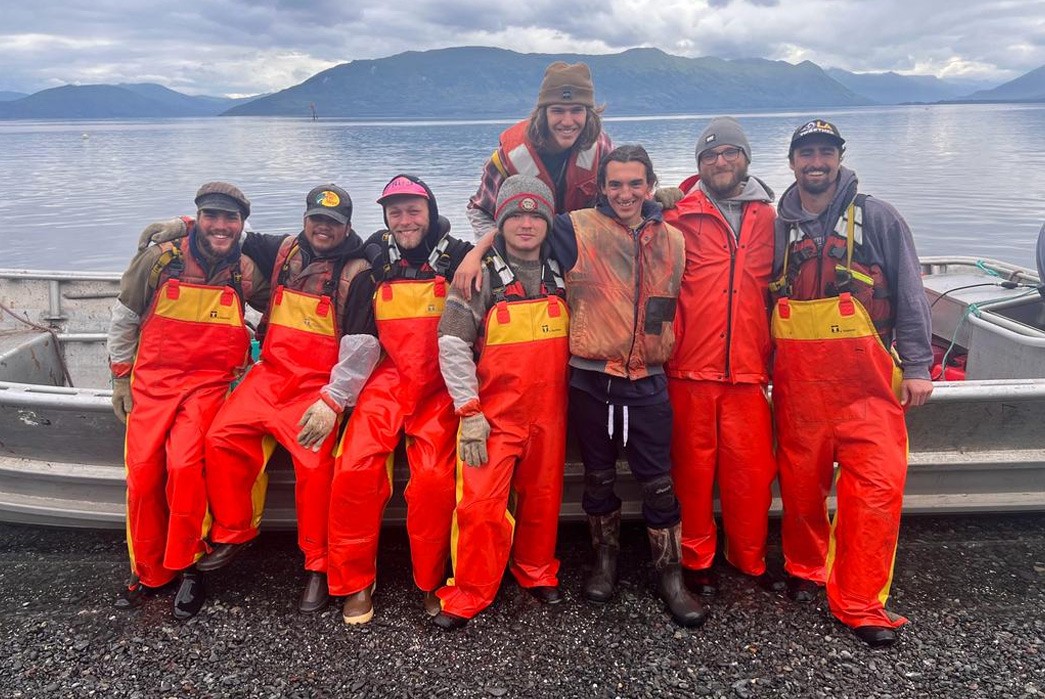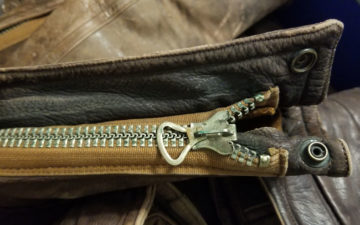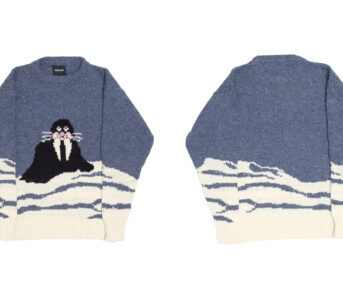No matter where we are in our lives, there’s an adventure to be found in all of us. Enter Grant Hanson, a student of history on summer break from college who ventured to Alaska looking for work. I asked him about his experiences with the commercial fishing fleet because this region has a reputation in the maritime community—you either stay vigilant or get swallowed by the frigid surf. Grant’s sea stories brought the fury of Triton into a frightening reality.
“The worst [weather] that we went out in was ten-foot (three-meter) waves, in about three-second intervals, with 25-mile-per-hour (40-kph) winds…We got pretty good at moving around the boat despite this, ’cause we still had work to do…”
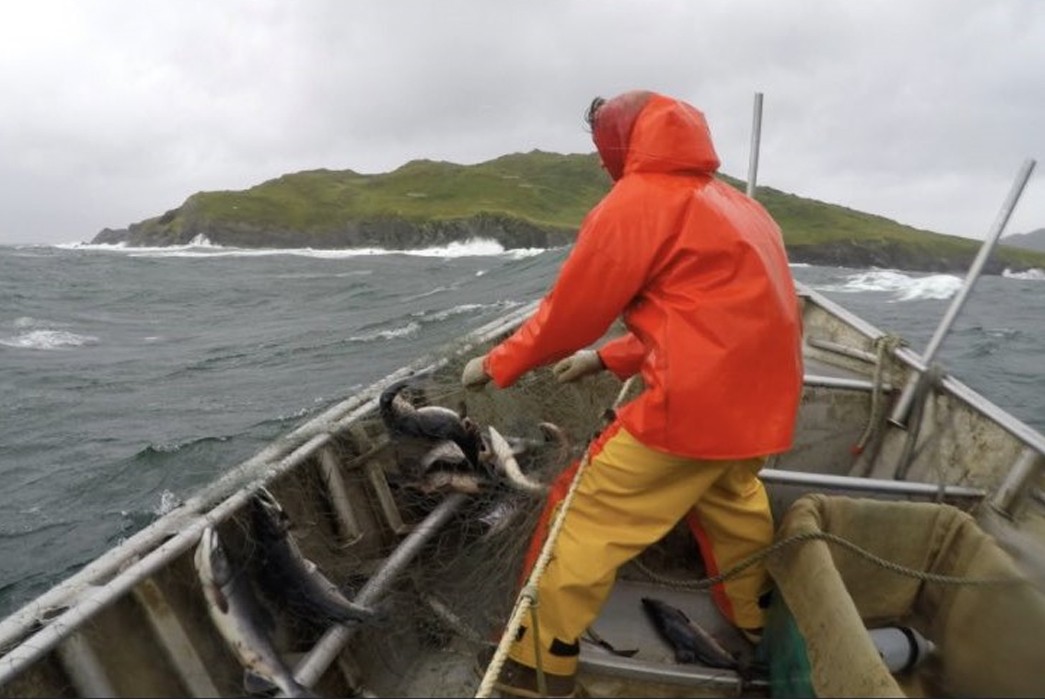
Hauling the net into the skiff. Image via Grant Hanson.
Ever since the fabled voyages of Odysseus, the sea has stirred leadership in those who catch its wrath. Make no mistake, the danger is as real today as it was centuries ago. Fishermen across the globe pay a heavy price to earn a living. The skiff—or small boat—that Grant was piloting that day not only carried valuable equipment but it held human lives within its open hull.
“In my case, I was a skipper so I had to really keep myself squared away and upright…I was driving one of the skiffs and I was in charge of another crewman; my bowman [who helps hoist the nets]. Every now and again you’d catch a wave wrong…we usually had bruises from [that].”
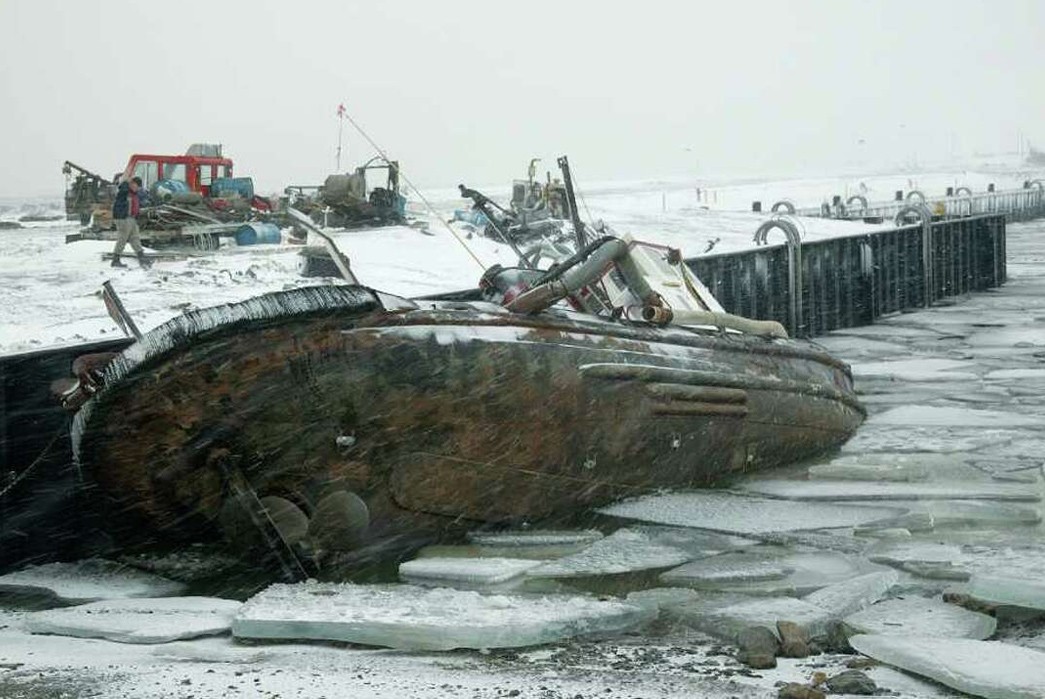
A 2011 storm wreaked havoc in Alaskan waters. This fishing vessel fell victim in Nome. Image via Chron.com
Rolling seas and small boats leave little margin for error. Like in the Greek classic mentioned above, the Alaskan commercial fishing fleet embarks on its own seaborne odyssey each year—not in search of home but in search of livelihood. Grant Hanson of Texas joined them in the summer of 2023 and experienced the terror and triumph for himself.
Luckily for us, while performing hard work, he put his clothing to the test. In this interview, he shared with me some key takeaways that workwear aficionados will thoroughly enjoy.
There’s Cash in Canning
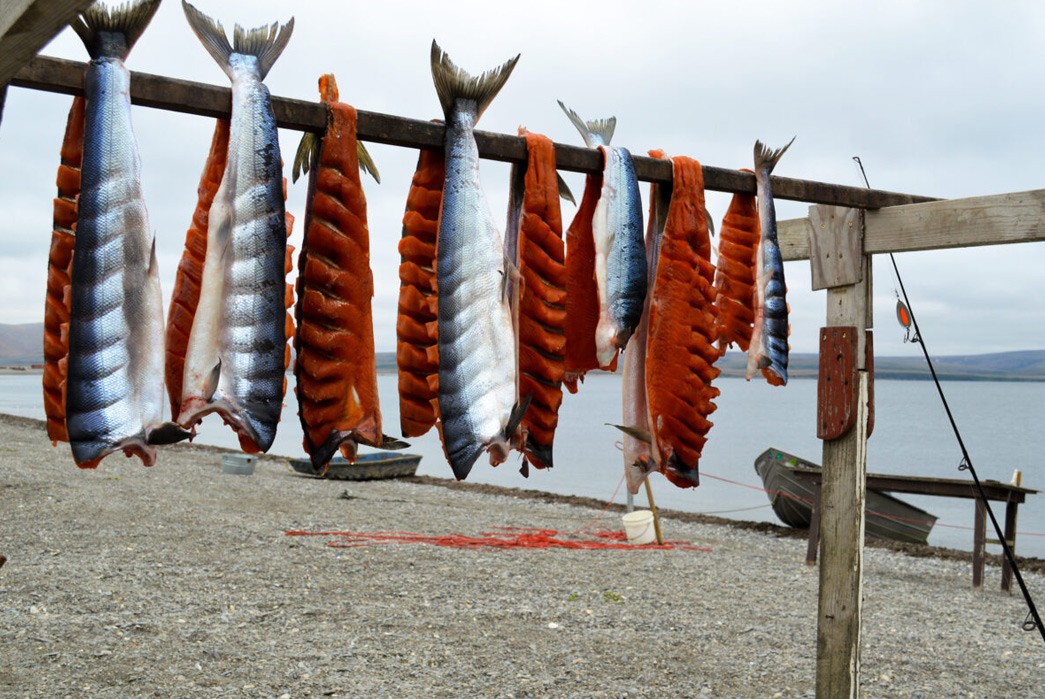
Traditionally, Alaskan natives dried and smoked salmon as a way to preserve it. It gives the meat a hearty “jerky-like” texture and makes a perfect snack on long hikes and hunts. Image via knom.org
Mineral extraction put Alaska on the map in the 20th century, but fishing has remained a steadfast economic force. By the late 1870s, the first commercial-scale fisheries required the construction of nearby salmon canneries. This industry alone propped up the territorial government for most of the late 1800s; 80% of its tax revenue came from canned salmon! In addition to money, it also brought migrants to the region looking for work. Communities grew around many canneries which were fed by a growing fishing fleet.
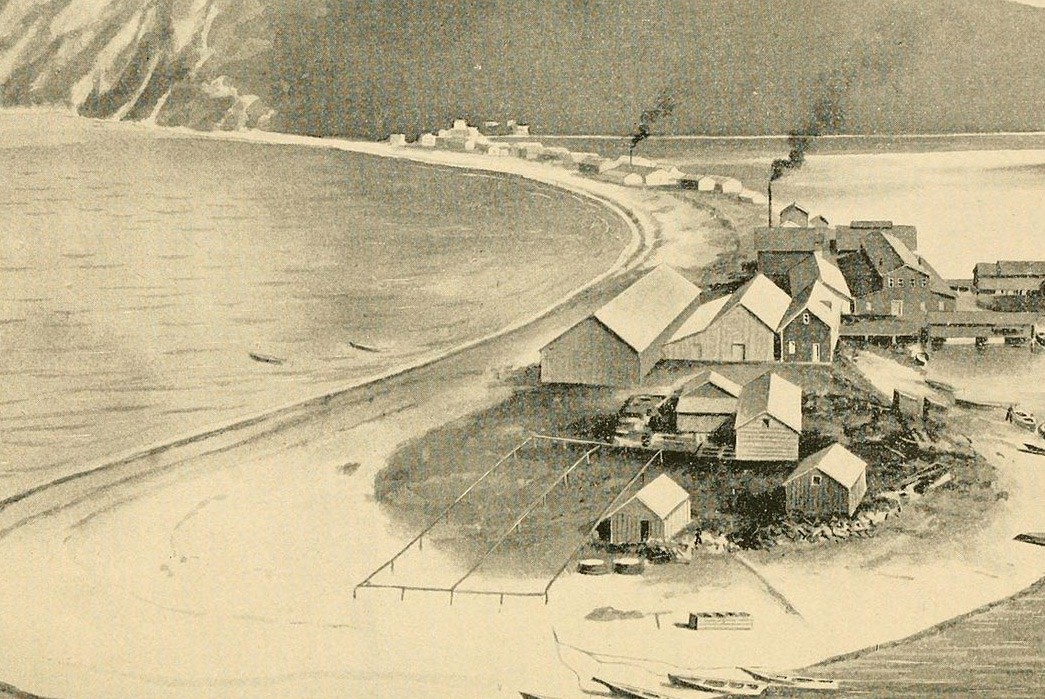
Cannery smokestacks loom overfishing skiffs on Kodiak Island in this 1890s view. Image via Miner W. Bruce/Wikimedia.
In keeping with 150 years of tradition, quality seafood can be ordered straight to your doorstep from the cannery. Try some smoked salmon with another savory seagoing staple: Pilot Bread.
Welcome to Harvester Island
“I was initially looking for some sort of labor work for the summer…First and most pragmatic was the fact that these jobs hire folks without much experience—with no degree—but still pay [really] well. The other reason was that, as a labor historian, I think it’s important to understand exactly what hard work is. To talk about blue-collar, I’ve got to wear that blue-collar myself.”
It was this motivation that brought Grant to Harvester Island—a remote outpost just off the northwest shore of Kodiak Island in the heart of the salmon fisheries. What could he expect for summertime temperatures during his tenure?
“It rarely gets above 60°F (16°C) on Kodiak Island, and it’s colder on most of the mainland, so be ready for it!”
Cooler temps were definitely a reprieve from the oppressive Texas heat, but could feel downright brutal on the open water. However, chilly weather was just one consideration for what to wear.
“…If you’re heading anywhere remote, get ready for biting flies. They were so bad, that sometimes we had to wear mosquito nets when standing around mending [fishing] nets.”
In light of these facts, what are you packing?
The Seacore Aesthetic: Some Essentials
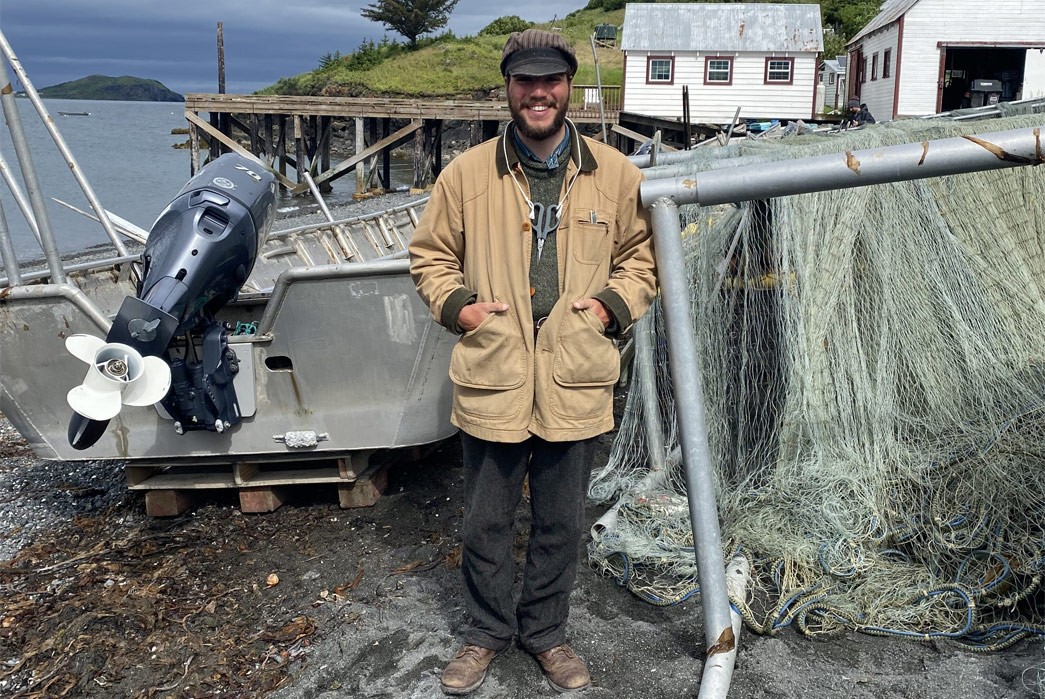
Mending nets. Image via Grant Hanson.
When most people think of fishermen hauling in huge seine nets brimming with fish, they probably imagine them clothed in wool knit sweaters. This popular image is well-founded. Originating in Britannia, fishermen’s sweaters or “jumpers” go back about 400 years. Intricate cable-knit designs, which can be closely associated with various families and clans, came later with some publications dating it to the late 19th century. Cable knitting has strong moorings along the Irish coast. Companies like Aran Sweater Market and The Donegal Shop export their products across the world.
“I’d say my most important article of clothing was the nice [Donegal] wool sweater that I picked up before I left—a real, traditional knitted one…Kept me warm when I got wet [and] it stood up to a lot of abuse…”

Joe Leach, one of the fishermen from Brighton, East Sussex, England who participated in the 1940 Dunkirk evacuation. He wears a classic cable-knit sweater with a turtleneck collar. Image via Facebook/Brighton Fishing Quarter & Museum.
Keeping your upper body warm is certainly a critical requirement when piloting a small boat, but we can’t forget your feet. As waves wash over the side of the vessel (or the “gunwale” as sailors call it), there will inevitably be several inches of water at your shins. If he were to do this work again, Grant had some thoughts on waterproof boots;
“The ones I bought myself were ten inches (25 cm) tall and more comfortable than the full-hip boots. [The] only trouble was that I always found myself in eleven inches of water.”
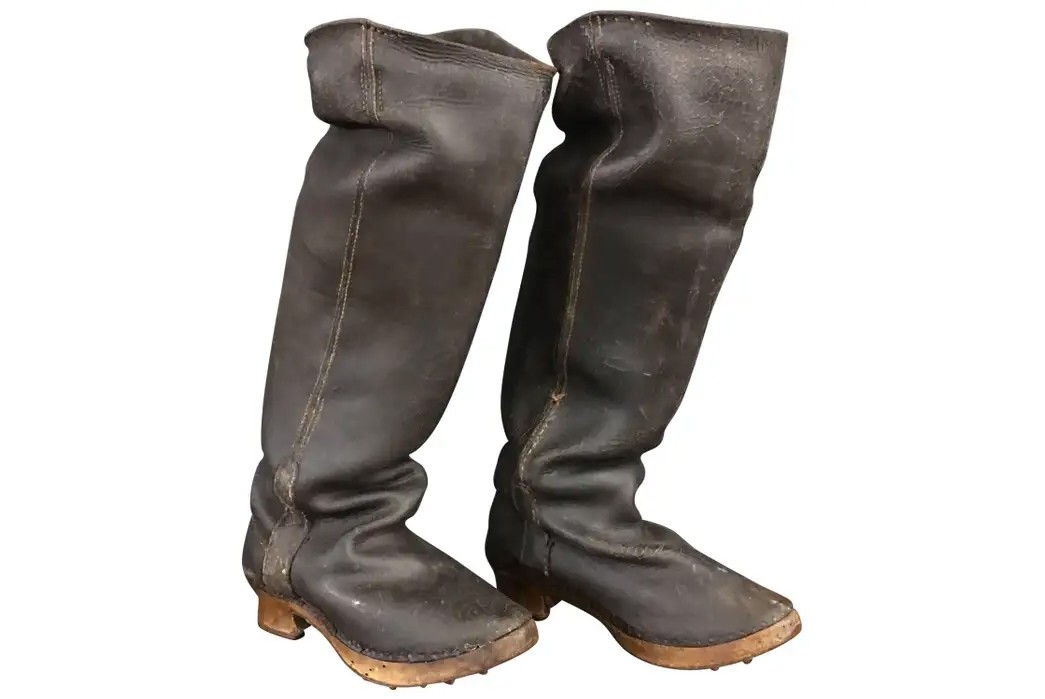
Turn-of-the-century leather fisherman’s boots from France. Image via 1stdibs.com.
Reflecting on what Grant said, my own fishing experiences have taught me to wear waterproof deck boots or you may as well be barefoot. Soaked shoes are as cumbersome as they are uncomfortable and they can be downright dangerous in cold weather. Tall leather deck boots were the standard for generations and rubber boots have been around since the mid-19th century. Today, synthetic materials like neoprene are prized for shedding water and maintaining a grip.
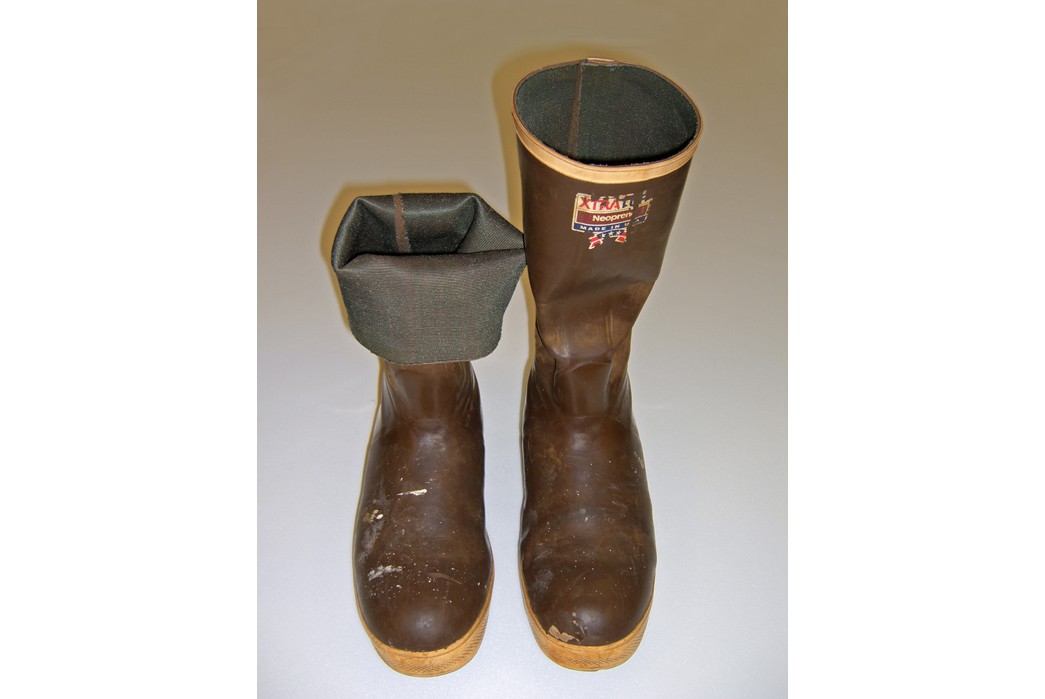
Vintage Xtratuf-branded rubber fisherman boots. Image via The Smithsonian.
Boots may be the unsung heroes of commercial fishing, but few articles of clothing make a statement like headwear. Grant opted for a cotton version in Alaska that has a similar silhouette to its Greek counterpart. Like the cloth crown, the history of these caps is somewhat nebulous. They began appearing in Europe and North America in the 19th century under various names and among a wide range of ethnic groups and artisans. In some nations, like Greece, they achieved an enduring cultural status.
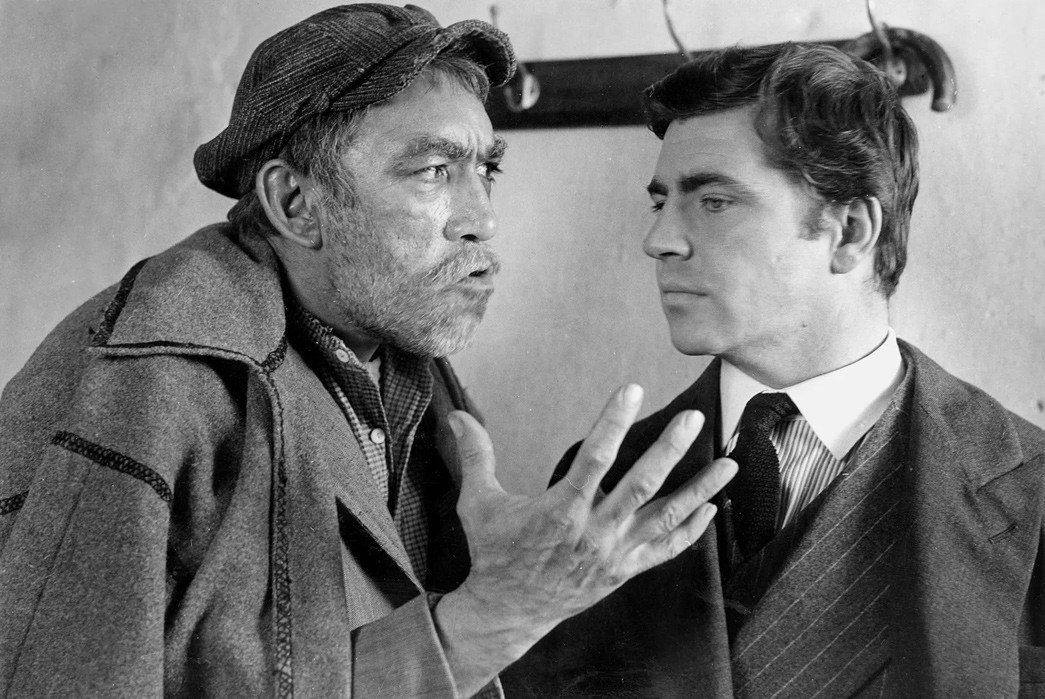
Anthony Quinn played the immutable Zorba in Zorba the Greek (1964). His character helped popularize the image of Greek fisherman caps in the late 20th century. Image via Michael Cacoyannis/The Providence Journal.
Foul Weather Gear
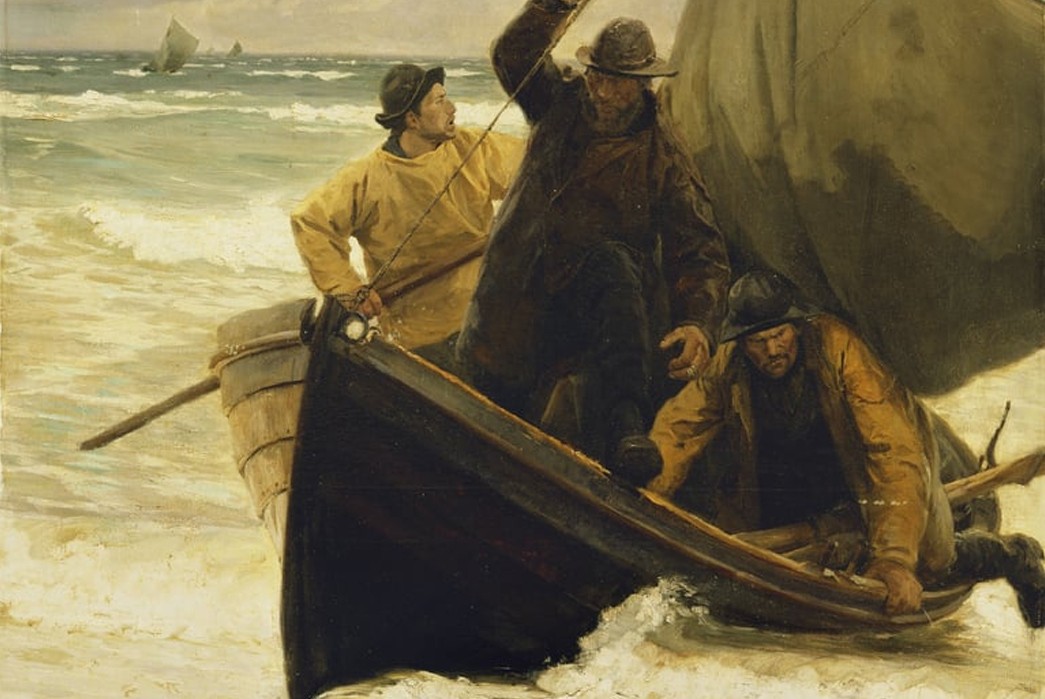
“Fishermen Returning Home, Skagen” (1885) by the Danish painter Peder Severin Krøyer. Image via Meisterdrucke.de.
The sou’wester hat is an icon of fishermen and sailors alike. Its stitched brim can be turned up to act as a gutter—channeling water from the crown to either side of the wearer’s face—or left down in the heaviest of deluges. The name references the winds that bring stormy weather to New England (and the British Isles across the Atlantic). While this distinct rain hat is over 170 years in the making, modern raincoats can protect the head with an integrated hood.
Building on the foundation of a warm sweater and tall boots, the next challenge is keeping your body dry. Rain gear is thus a critical part of the fisherman’s workwear. Black rubberized rain slickers and cotton oilskins of years past have since been replaced by high-visibility synthetics. The iconic “yellow” raingear worn by fishermen was originated unintentionally due to oils oxidizing on sailcloth but the color has stuck around. Colors and materials aside, it’s not just a singular garment that makes up foul-weather clothing—the key is layering.
“We had three different pieces that we’d combine; those being a [hooded] raincoat, rain pants (which are sort of like overalls but waterproof), and hip waders.”
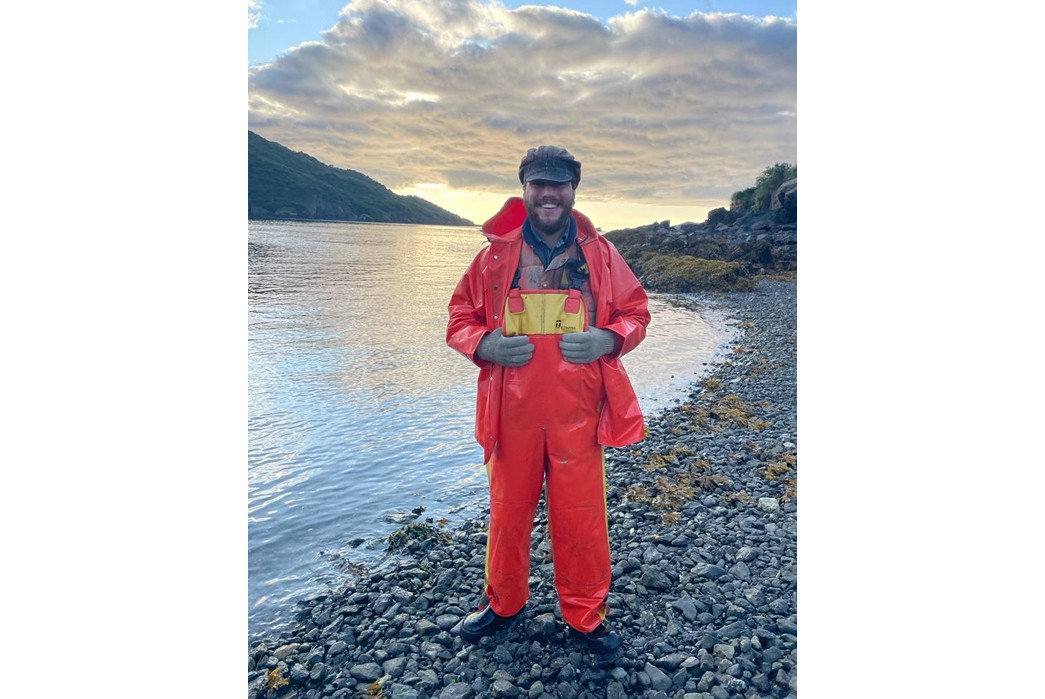
Standard rain gear. Image via Grant Hanson.
However, even with adequate coverage, there were still problems. Physical labor is hard on rainwear.
“…[T]hey were prone to holes. I flooded my boots more times than I’d like to admit and came ashore with soaked clothes about as often. To be honest, I learned to cope with it pretty easily because all that wool [that] I wore kept me plenty warm.”
Raingear needs periodic maintenance. In the old days, oilskin and waxed cotton fabrics would need a fresh coat every once in a while. Patching systems can be bought for modern synthetic rain suits.
From Fleet to Street – Modern Makers
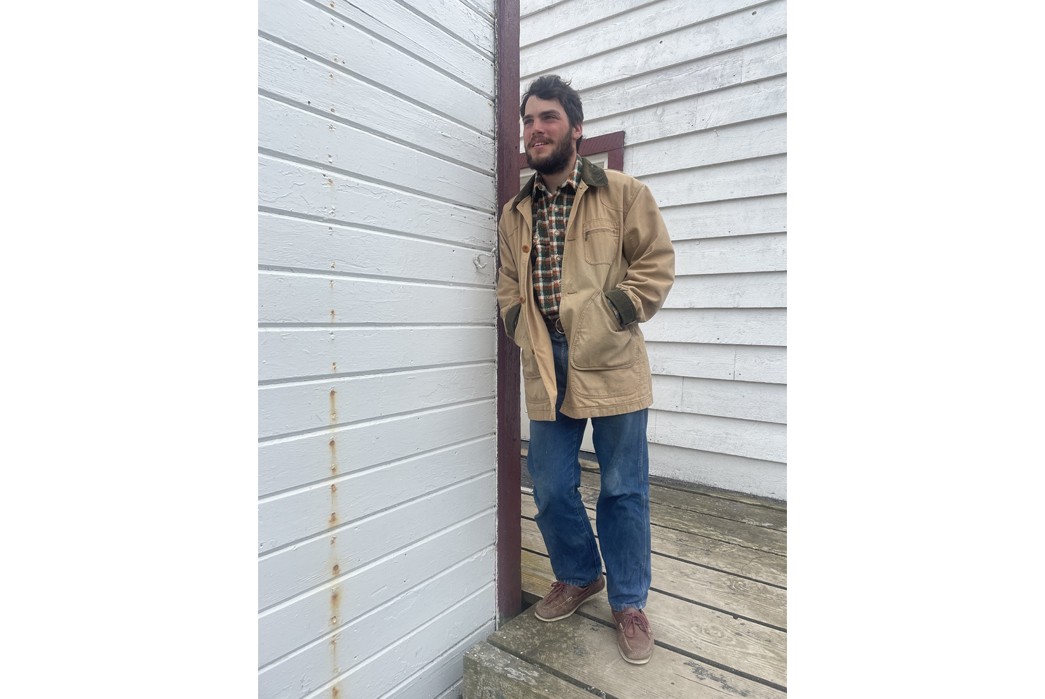
Off the boat for a bit. Image via Grant Hanson.
We’ll take a look at some of Grant’s insight below, along with clothing selections curated by the author. The beauty of the Seacore aesthetic is that it works on dry land as well. Certain pieces are versatile enough to transition from fleet to street without designing an entire look around them. A prime example is cable-knit sweaters, which are making their seasonable reappearance this fall. If nasty weather this winter has you worried, we’ll have that covered as well.
Atlantic Rancher
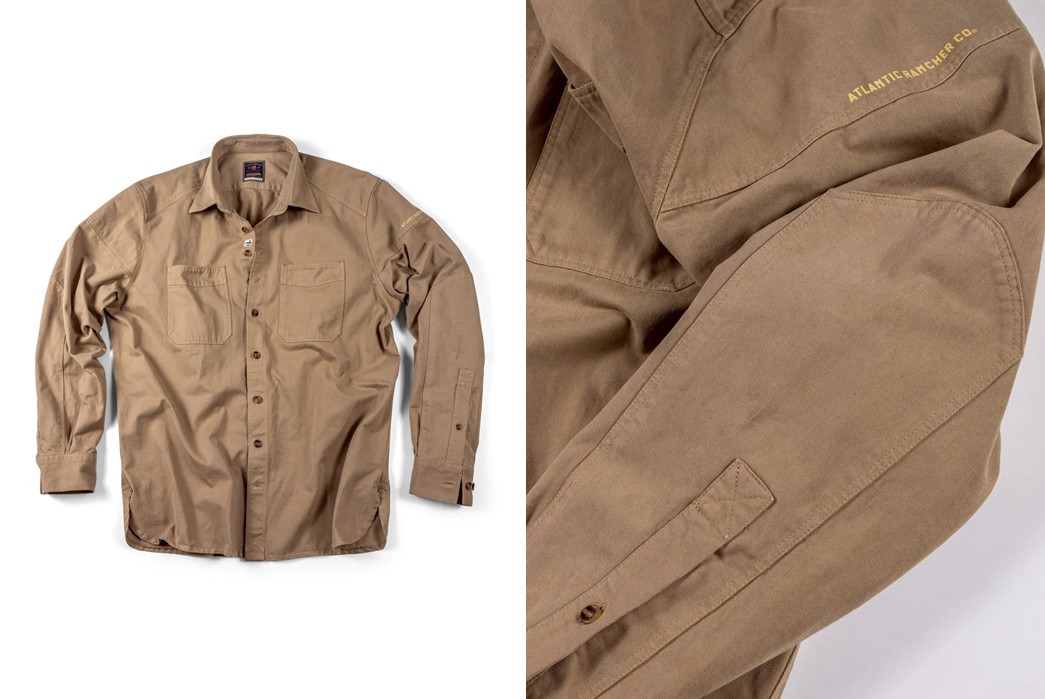
Cotton twill forms the basis for a lot of hard-wearing shirts and pants. Atlantic Ranger has a line made in Portugal from soft, brushed cotton twill and is purported to be as tough as oak. Evidently, it has staying power. The Boatyard Shirt – 25th Anniversary Edition is at Atlantic Rancher for $148.00 (in several colors).
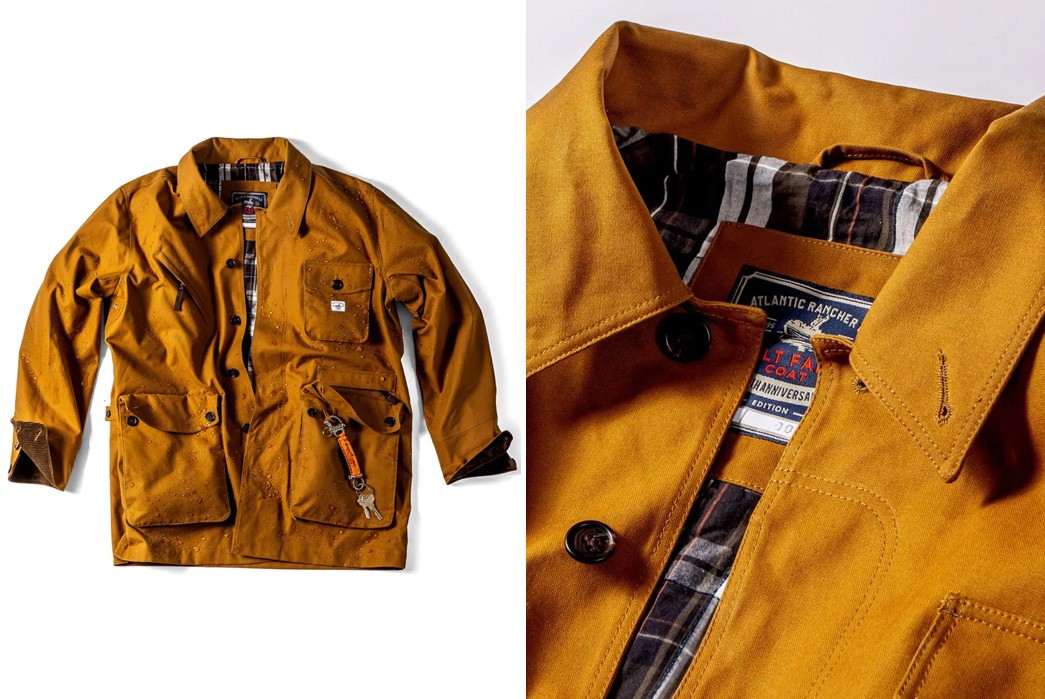
Few pieces evoke modern workwear style like the chore coat. Another legacy garment from Atlantic Rancher has stood the trials of time with their Salt Farm series. “From Maine to Alaska,” set sail in the Salt Farm Chore Coat – 25th Anniversary Edition from their web store for $398.00.
Big Bill
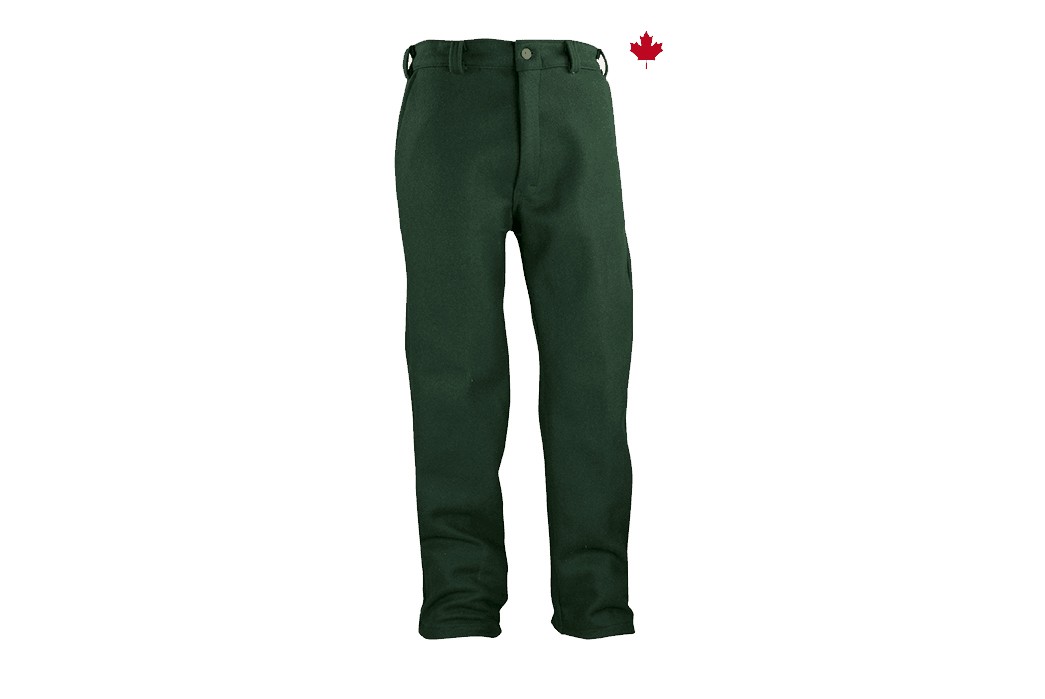
While a few pairs of Wrangler jeans were all Grant needed on warmer days, wool pants took the bite out of the air. The Wool Outdoor Pants selections on Big Bill will be sure to keep your legs warm. Prices range from $108.99, for the green wool blend, to $142.99 for the 100% wool plaid.
Donegal Sweater Shop
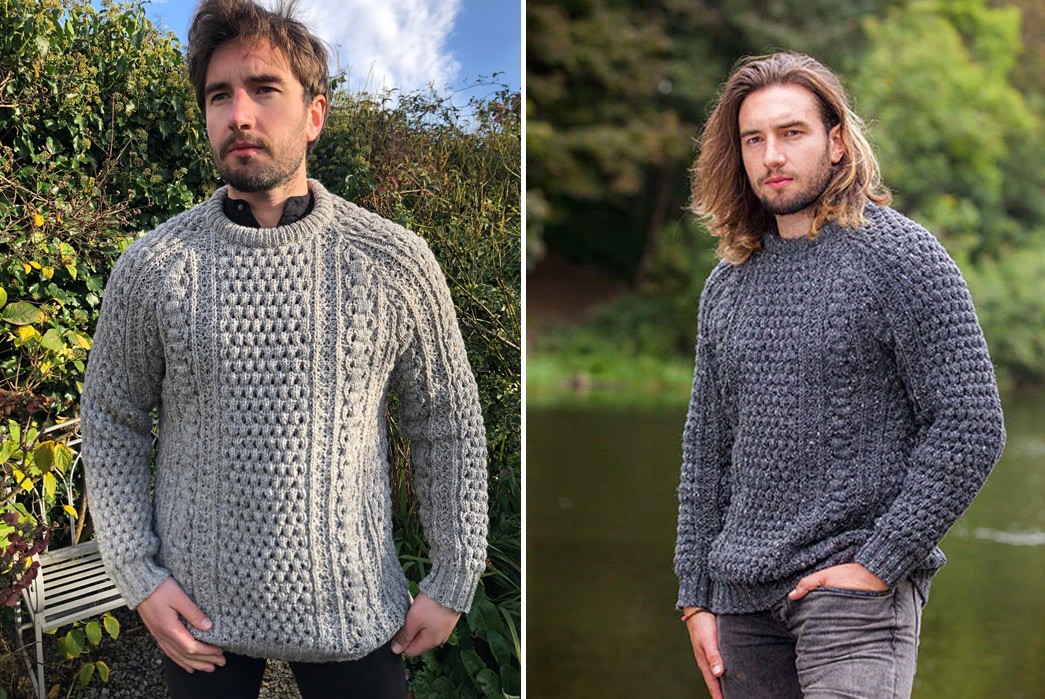
This is a timeless classic and one that Grant couldn’t have gone without. I have a similar sweater which I wear religiously during the winter under my jackets or as an outer layer. While Grant and I have green versions, it’s also a versatile piece for any winter outfit. Check out the Donegal Hand-Loomed Aran in Grey or Light Grey on their website for $159.
Grundéns
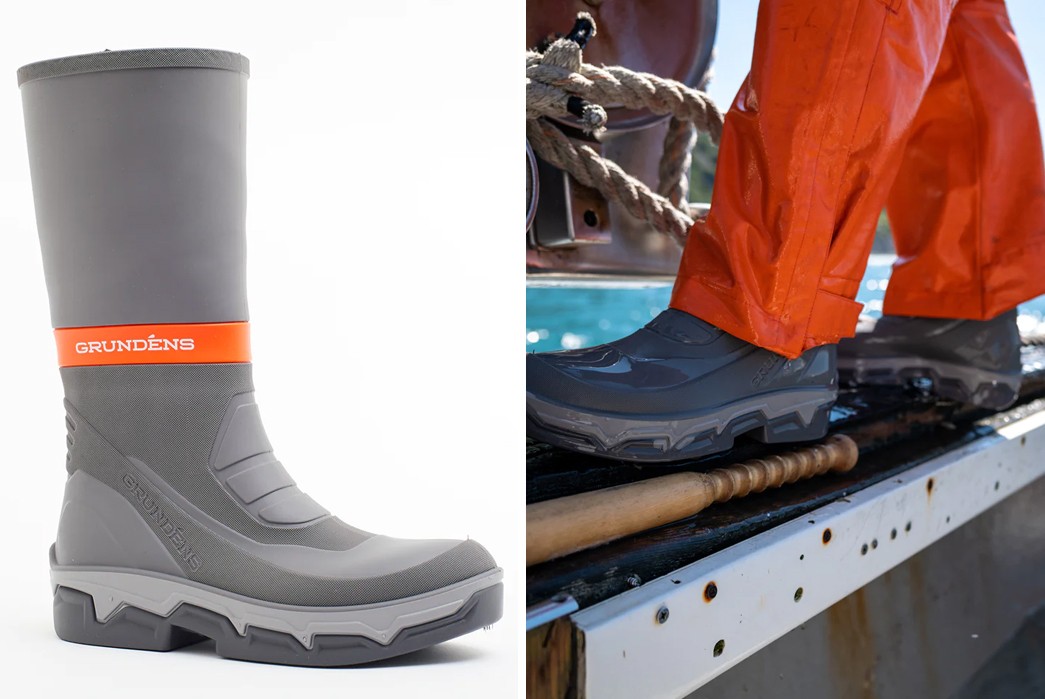
Grundéns is a Portugese company with Swedish roots and the go-to for commercial fishermen. Among their flagship line is this towering 15″ boot which is made in the States. If you find water in these, you better start swimming. The Deck-Boss 15″ Fishing Boot is available on Grundén’s website for $149.99.
Hills Hats
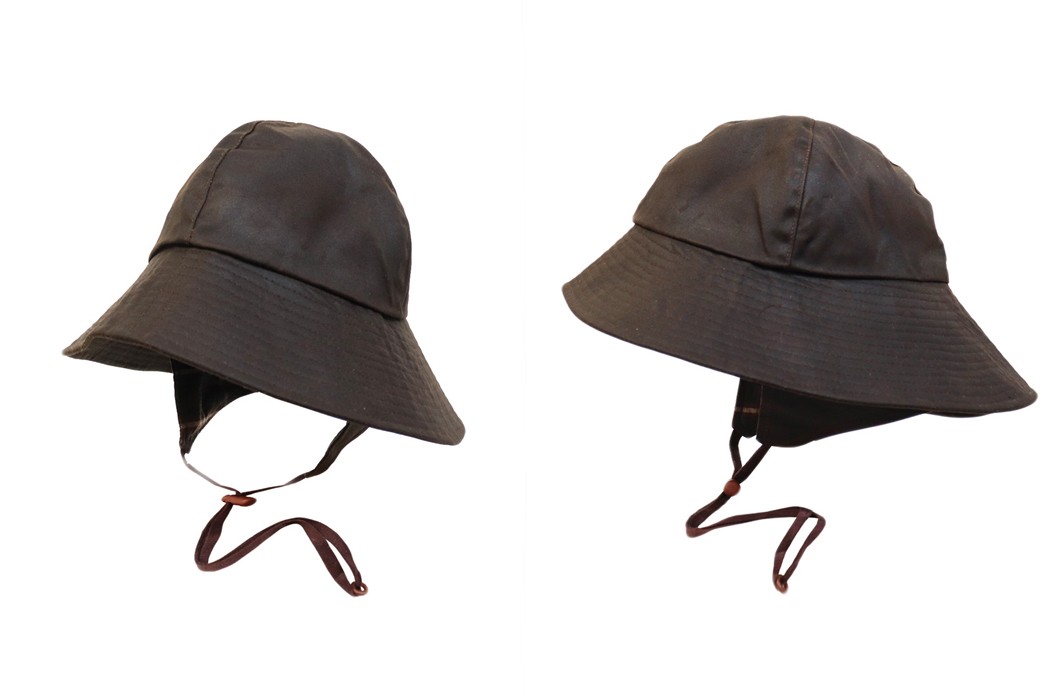
Imagine a sou’wester made from premium Australian oilskin—and lined for warmth—with ear flaps added for all-around comfort. This hat is my go-to for tropical weather and colder days alike. Also, the adjustable chin cord keeps your head covered even in high winds! Snag The Souwester from Hills Hats for $139.00.
Quaker Marine Supply Co.
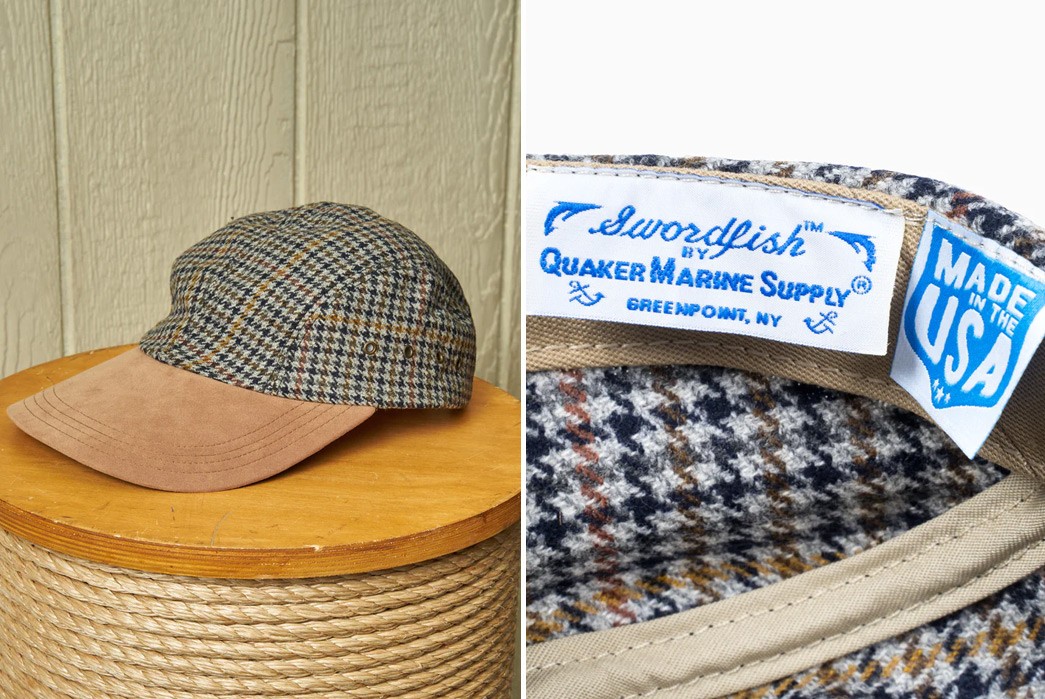
Ernest Hemingway and Jack Nicholson have enjoyed the unique nautical headwear designed by QMS—each style has a multitude of colors to pick from. The Swordfish in Grey Houndstooth Wool with Suede Brim is just one option to keep the sun of the open ocean at bay. Call on Quaker Marine Supply Co. and bring home this midcentury cap for $78.00.
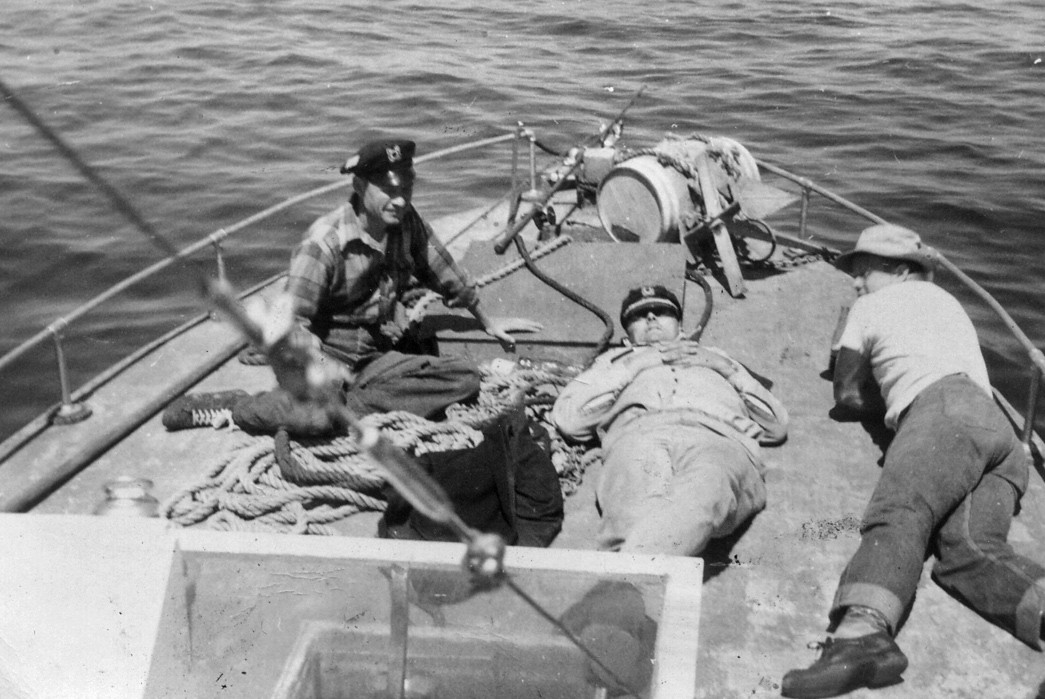
Fishermen rest on the deck of the boat after a long day. Note the caps. Image via mhallack/Shorpy.com.
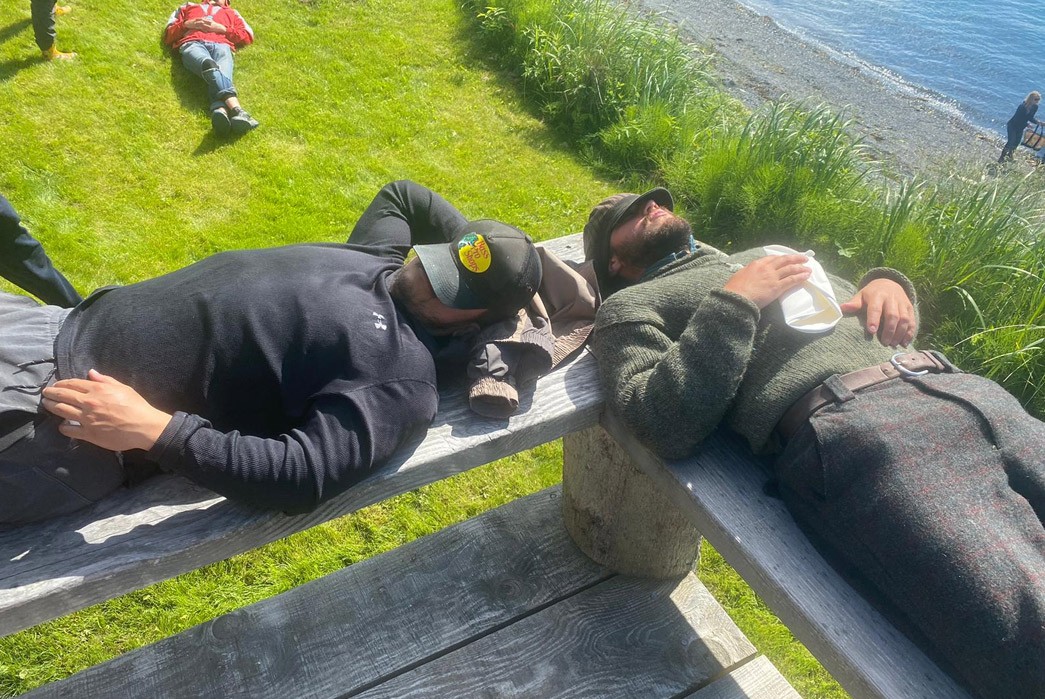
A quick nap while ashore. Image via Grant Hanson.

